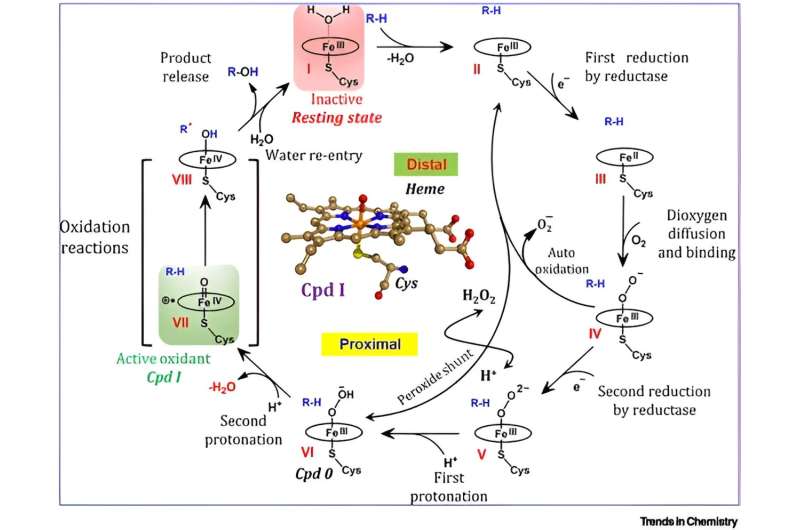Phys.org August 7, 2023
An international team of researchers (Israel, India) addressed the difference between regular 3D matter and the nanomachines in ‘living matters’ (e.g., the CYP450 enzymes), which oxidize an array of essential substrate molecules. Molecular dynamics simulations revealed that, unlike 3D materials, CYP450s are 4D nanomachines, in which the fourth dimension was a sensing mechanism whereby the protein responds to an initial stimulus of substrate entrance and performs an autonomous chain of events (the catalytic cycle), which leads to substrate oxidation. They found that stimulus was the binding of a substrate molecule that eventually underwent oxidation in a catalytic cycle. Due to the tight space within the protein, the enzyme sensed the substrate and functioned as a soft-robot that interacted with the substrate using soft-impact modes of weak interactions. These modes transferred kinetic energy that elicits movements of protein parts and of molecules it contains. The sense-and-react mechanism involved soft-friction of touching atomic spheres [e.g., van der Waals (vdw) spheres], whereby the enzyme sensed changes in its protein parts, and in the substrate. These changes were transduced to motions of molecule/fragment and to chemistry. Thus, CYP450s and all nanomachines in ‘living matters’ are soft-4D-robots… read more. TECHNICAL ARTICLE

A generic catalytic cycle of CYP450s: steps of the catalytic cycle; the species are marked by Roman numerals. Credit: Kshatresh Dutta Dubey